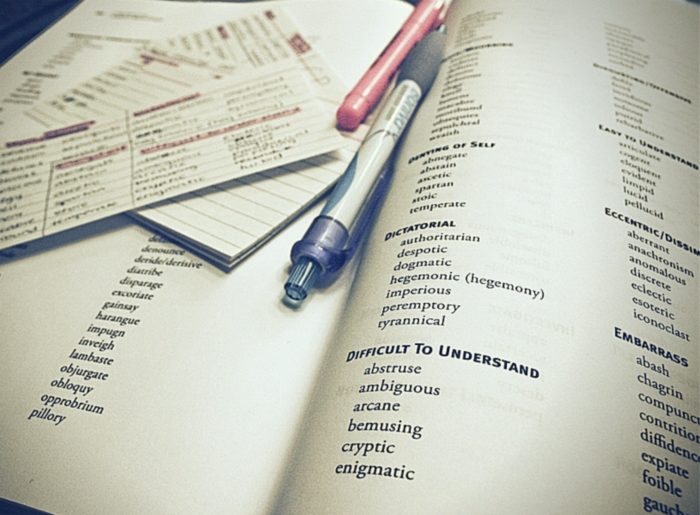A collection of resources and tools for bloggers and editors to help them stay focused, manage their time, and produce better work.
This is a guest contribution by Kenneth Waldman, a freelance writer and content creator from Sheffield UK, who draws his inspiration from traveling. Get in touch with him on Twitter or Linkedin.
Bloggers and editors work extremely hard. They have to be meticulous, knowledgeable, and detail-oriented. But they also have to be creative, engaging writers. They have to be efficient researchers, as well as extremely organized.
It can be a daunting task to have to keep up with all the tricks of the industry and the ever changing rules of language.
Fortunately, there are plenty of resources and tools for bloggers and editors, which can help them be successful in their jobs. Here are a few of them.
- A Dictionary
This might be too obvious to be on the list, but you’d be surprised how many editors don’t feel the need to keep a dictionary on hand.
After all, you can always look online for dictionaries. And that is true. But here is the problem with using an online dictionary. If you just Google a word to find the meaning, you might get one of the hundreds of dictionary definitions.
Editors need to have one dictionary that they use throughout each project from start to finish. If you are editing a medical journal, you need a medical dictionary. If you are editing a document specifically in UK English, you need a UK dictionary. Match the choice of the dictionary to the project to avoid any confusion with your language. - A Thesaurus
Every editor needs a thesaurus that they can turn to at any time. One of the things editors are always on the lookout for is repetition.
If an author has said “Furthermore,” over and over throughout their manuscript, it’s an editor’s job to either restructure the writing to eliminate the need for the word altogether or to find a word to replace it.
The best practice is to do a little bit of both. A thesaurus can also make your writing sound more vibrant, and make the text more interesting. - A Style Guide
For copy editors, an up-to-date version of your preferred style guide is essential. Depending on what sort of editing you do, you might need Chicago, APA, or Harvard.
For instance, most journals and media outlets use APA style guidelines, while book and eBook publishers tend to favor Chicago style.
The most important thing is to be consistent throughout each project. You can find a hard copy of the style guide you need at any large bookstore or online.
Some style guides also have online subscriptions for those who prefer to do all their editing digitally. Reference your style guide any time you have a question about grammar or structure while editing. - The Elements of Style
No editor’s bookshelf can be considered complete while it lacks Strunk and White’s The Elements of Style. Writers should have a copy as well.
This book is known the world over as the definitive rulebook for stylized writing. It contains a large list of commonly misspelled words, commonly misused words and expressions, principles of composition, rules of form, and rules of usage.
It’s a single source for virtually any question you may have about how to write proper English grammar. While the style guides prescribe specific rules for capitalization, commas, italics or lack thereof, etc., The Elements of Style takes a broad approach to discussing the finer points of writing, regardless of the style guidelines. - Evernote
Perhaps the hardest part of editing is keeping up with the workload and staying on top of competing deadlines and assignments.
There’s no shortage of organizational tools available, the problem is finding tools that are actually useful and don’t take more time than they save.
One fantastic tool is Evernote. Evernote keeps track of everything in your professional and personal life. Think of it as an assistant that you keep in your pocket.
Evernote works on any device from a tablet to an iPhone or PC. It will take your organizational skills to an entirely new level. - Wridea
Wridea offers users an “idea management system,” so they will never have to worry that their ideas might be forgotten. Think of it as a virtual string around your finger.
The website contains a large collection of brainstorming tools including idea bubbles that you can modify as needed. You can share your ideas with other Wridea users. Divide your ideas into pages or categories based on the theme.
You can even color-code them for easy retrieval. - Google Calendar
Along with organization comes time-management. Having a solid plan in mind is vital. With so much to do, it can be easy to let deadlines, or whole projects, slip through the cracks. Having a good calendar and a smart plan for time management can go a long way toward staying on track.
Use a Google diary to keep track of everything from project deadlines to meetings with clients and doctors appointments. - WordPress’s Editorial Calendar
If you do a lot of work on WordPress, this might be more effective than your standard calendar. It integrates your calendar into the WordPress website so you can easily monitor when your posts will be published and track your editing and writing deadlines.
This will also save you from having to switch back and forth between your work and your schedule since they’ll be built into the same platform. - Toggl
In order to keep your schedule on track, use Toggl. Toggl keeps track of how you spend your time. Most time-management applications and websites help you manage your workday by breaking the day into smaller, more manageable chunks.
Toggl is different. Instead of setting alarms for how long you should work, you set up “projects.” Each project is a task that you are planning on working on throughout the day. For instance, your tasks might be, “Edit manuscript for Jason,” “Write blog posts,” “Marketing,” “Lunch,” and “Edit eBook for Cindy.” Toggl will color code each project.
You just tell Toggl whenever you start and stop working on each project. Use the app to find out if one project is taking too much time or if you’re spending too much of your free time on Facebook. - BibMe
Editors and copyeditors who specialize in academic writing will love BibMe. The website creates a bibliography and works-cited pages based on your desired style. Choose between Chicago, MLA, APA, and hundreds more. Input the data you have, and BibMe will auto fill the rest of the information.
You can save hours on each project with this tool, to say nothing of the amount of sanity it will save you. - Aviary
If you’re a photo editor, you can use Aviary to do light touch ups on existing images. The site has a flash based photo editor and an ultra lightweight HTML5 editor, as well. Aviary is free but requires that users sign up for the service.
- Copyscape
When you’re finished with your final edit, it’s a good idea to run it through Copyscape. Copyscape is the most accurate and advanced plagiarism detection tool on the web.
It’s very easy to use. You can either copy and paste your content, or you can type in the URL of the page you want to check. The website is free to use but does require you to have an account. - EssayMama.com
If you need some help with your workload, you can hire EssayMama.com to edit for you. They also offer writing and proofreading services. If you’re stuck in a writing rut and need some inspiration, you can read their blog for tips and tricks pertaining to editing and writing.
Some of these tools (like the dictionary and style guide) are essential. You shouldn’t consider working without them. Others (like BibMe and EssayMama) just exist to make your life a little easier.
Hopefully, these tools will improve your editing skills, and ease your workload. After all, editing is making good work great. It should be rewarding and fun!
FAQs
As its name suggests, the editing toolbar in Microsoft Word allows users to add and edit content using the toolbar, and it allows users to access the toolbar that adds functionality to their content. It provides access to common word processing functions.
Bloggers typically use the writing editor built into their blog software (WordPress, Ghost, etc.). You can also use Google Docs to collaborate with others and take advantage of the extra features.
It is the responsibility of the blog editor to manage all of the writers (paid and volunteer) who contribute content to the blog. Among other things, this involves hiring, communicating, answering questions, meeting deadlines, providing article feedback, and adhering to style guide requirements.
A growth blog for professional bloggers and ad ops professionals.



![Top 12 Ad Networks in India Every Publisher Should Know [2024 Edition] Indian Ad Networks](png/undraw_note_list_re_r4u9-270x180.png)



